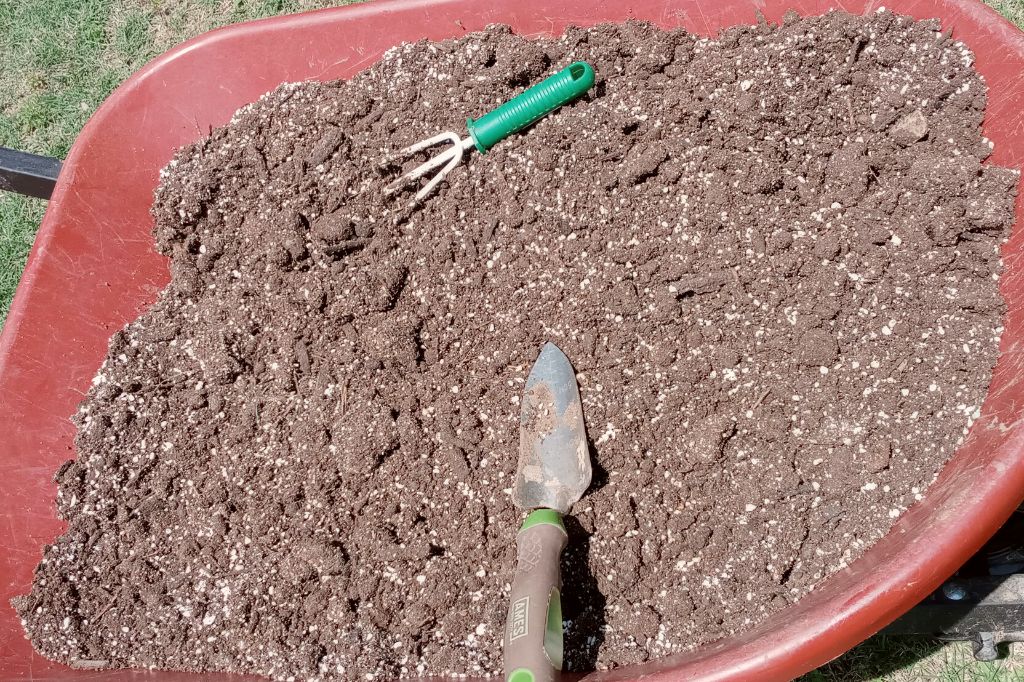Solution: Manure and Perlite
It has been an unusually wet and cold spring in Oklahoma this year – and almost no tornadoes! Which has been great for me since I love spring and we rarely get one, but my raised beds have been much less happy.
The only thing I used to fill my beds this year was a layer of cardboard along the bottom and then a garden soil mix on top. In hindsight, I probably should have supplemented my soil a bit more but I’m learning as I go so I’m not going to hold it against myself.
To solve the compaction issue ( which you can read more about in my post What We’re Growing: Year One ) we decided to add manure and perlite into the soil of our raised beds which would be relatively straightforward… if they weren’t already planted!
The Raised Beds (Before)
When the rain-rain-rain started I was hesitant to disturb the soil too much, even as compacted as it was, since the roots were still so new and the sprouts so small.
As the rain kept on coming though it started to be obvious that some of the sprouts just weren’t going to make it.
Prior to starting the soil additions, here’s how the beds were looking.




Some good, some not so good, but all the beds had at least some plants in them doing well.
Eventually I decided that given the length of our growing season (zone 7B) I could probably get away with just replanting the failed sprouts completely and being careful around the bigger plants.
Getting it Done
Each of my raised beds has an area of 16 sq ft – so to make the soil additions I opted to use 80lb of cow manure and 8qt of perlite per set of beds.
Mostly because the perlite came in 8qt bags and I didn’t see a reason to try and divide that equally in half.



Once everything was all mixed up in the wheelbarrow I carted that over to the beds and spread the mix evenly over the soil.
Then with everything as evenly distributed as I could manage I went in with garden gloves and my hand fork and tilled it into the beds being very careful of the root systems of my bigger plants.



And ta-da!
The Raised Beds (Replanted)
Even with a long growing season, there were some plants that just didn’t get replanted this go around.
- Stars are the things I replanted
- Stars + underlined are the things I replanted and changed out




Overall
It’s been about a week since I’ve done my soil additions and replanting and some of the new plants are already sprouting!
It’s rained a few times since as well and the manure and perlite seem to be working well. I haven’t lost any more height in the soil at least.
An unexpected benefit – the birds LOVE it.
Ever since I’ve added all that manure the birds have started perching on the trellises and dive-bombing for bugs that have been attracted by the new soil.
Coincidentally I’ve also noticed I have a lot fewer wasps this year with all the birds around. A big win all around so far!
What do you think?
What are your go-to solutions for soil compaction?
Comment below and let me know!
For more info about why we’re urban homesteading check out my post Starting our Urban Homestead and keep an eye out for a general update post soon.








